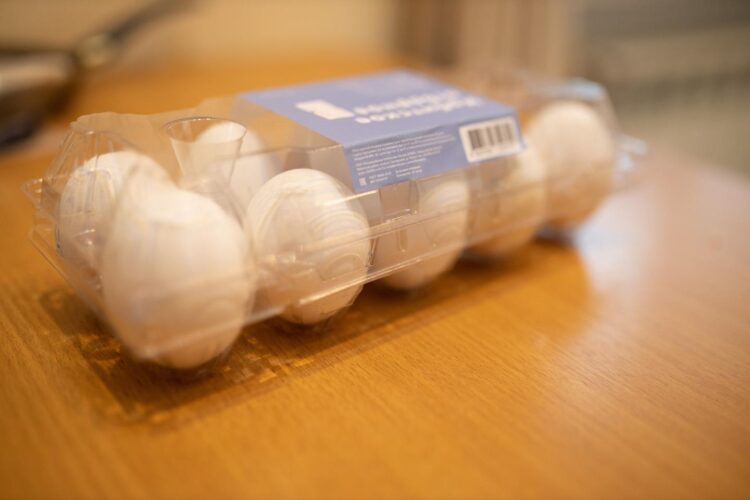It allows to kill bacteria and to raise healthy chickens with less dose of antibiotics

Credit: UrFU / Ilya Safarov.
Russian researchers have developed an inexpensive, safe, and reliable packed eggs surface disinfection technology. This technology helps to kill bacteria, including salmonella, on eggshells. Also, it allows growing broiler chickens with strong immunity to viral diseases. Packed eggs are disinfected with 50 nanoseconds (one billionth of a second) electron beam. Disinfection takes place in plastic containers. The description of the technology was published in Food and Bioproducts Processing.
“Disinfection of the packed eggs protects eggs from subsequent contamination during storage”, said Sergey Sokovnin, a professor at Ural Federal University and Ural Branch of Russian Academy of Science. “We found out that 5 kGy is enough for disinfection. Such dose allows to disinfect container and eggshells but does not affect the physical properties of the protein, yolk, and shell, or their composition. The size of the eggs does not matter.”
Disinfection does not affect the quality of meat and the volume of chicks. So, if 63% of chickens hatch from ordinary eggs, then from processed ones – 64%. But the difference is that healthy chickens emerge from the disinfected eggs.
“86% of chickens from untreated eggs show signs of chronic inflammation. In chickens from irradiated eggs, this figure reached only 4%”, said Sergey Sokovnin. “At the same time, chickens from the second group had an increased immunity to Newcastle disease. This is a bird’s viral disease. It means that chickens from sterilized eggs will be less sick. And it will be possible to significantly reduce the dose of antibiotics when they are growing.”
The technology also saves time for industrial manufacturers. To hatch chickens from clean eggs, take about six hours less. Instead of the usual 22-24 hours, chickens appear in 16-18 hours. This is extremely important as it reduces production costs.
“The accelerator capacity is 108 million eggs per year, which is enough for a large poultry farm”, said Sergey Sokovnin. “It permits irradiation up to 40 eggs per second. The cost of irradiation of plastic packaging for 10 eggs was 1.2 Eurocents. If one technological line will operate in one shift of 250 working days a year, then the investment will be returned in five years. The main costs are staff salaries, overhead costs, equipment costs”.
There are no serious technical problems with the implementation of the technology. The small size of the accelerator makes it easy to integrate into existing lines for control and packaging of eggs in poultry farms. The technology, according to scientists, can also be used to disinfect the surface of eggs of other birds, as well as products with peels or another natural packaging (seeds, bananas, oranges).
###
Note that the work was supported by the Russian Scientific Foundation (project No. 16-16-04038). The research group includes researchers from the Ural Federal University, the Institute of Electrophysics of the Ural Branch of the Russian Academy of Sciences, the Ural State Agrarian University, and the Ural Research Veterinary Institute.
Media Contact
Anna Marinovich
[email protected]
Related Journal Article
http://dx.





